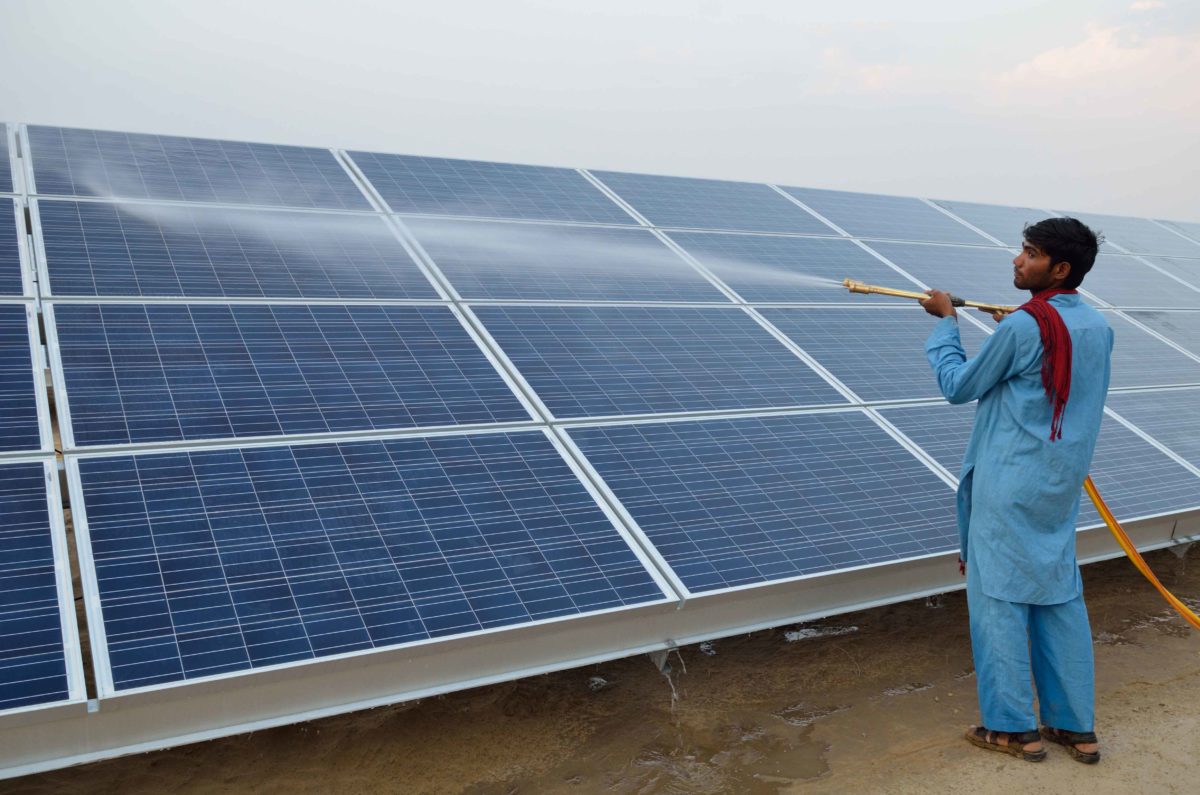From pv magazine India
Market intelligence and consulting firm, Bridge to India has released a new report laying out the effects of solar PV deployment across India on regional water management. While the technology is often lauded for requiring little water compared to thermal energy generation (0.1 m³/MW against 2.2m³/ MW), Bridge to India says the former's impact is exacerbated by the fact that solar plants are predominantly built in arid and remote regions.
In addition to the fact solar gravitates towards arid regions, as they promise higher irradiation levels, the market intelligence provider also found that India's solar installations appear somewhat concentrated. As such, five states comprise 70% of the country's installations, it says. For example, Karnataka accounts for 23% of solar installations, Telangana for 14% and Rajasthan for 12%, demonstrating the strong clustering of installations in these regions.
As water availability between, for example, Karnataka and Rajasthan varies greatly, so does the way solar O&M contractors handle water in these regions. While in Karnataka water is used more generously for module cleaning, contractors in Rajasthan are thriftier. Speaking with a range of O&M contractors from these regions, Bridge to India revealed that water use levels per module per cycle range between slightly above one liter, and can go as high as four liters.
According to the report, soiling effects can reduce a plant's performance by as much as 3-6%, putting at risk the site's economic viability. To reduce the effects to just 1% of operating assumptions, around two cleaning cycles per month are necessary to remove dust, dirt and bird droppings.
Resulting from this estimation, in conjunction with the installed capacity and knowledge of water availability in different states, the authors have mapped the state of water scarcity incurred by solar PV across India.
It estimates that 94% of India’s solar capacity is exposed to medium to high level water risk. Rajasthan, for example, is estimated to require 600,000 m³/year for module cleaning. The state is highly arid, and this water use reportedly further exacerbates the situation.
While Karnataka is located in a considerably more humid region than Rajasthan, the higher installation capacity here also requires more water use for cleaning. The 1,000,000 m³/year for module cleaning still places the state at medium to high risk, according to the scale established by Bridge to India.
Price hikes
Water scarcity in these regions has led to massive price hikes over the last years. In Rajasthan, prices for water have doubled over the last three to four years, due to rising demand. In Karnataka, meanwhile, water tariffs for industrial use reportedly multiplied 100 times in 2018.
Currently, the solar industry uses about 4,000,000 m³/year for 25 GW of installed solar capacity. However, India is on the path to increasing installations at a rate of about 10 GW per year. Bridge to India calculates that by the time the country has installed 65 GW, water consumption will have risen to 12,000,000 m³/year, which will further aggravate the problem.
Though solar PV is not the sole culprit here, the adverse effects for the industry are significant, as cleaning accounts for 26-35% of total O&M costs.
Resulting from the analysis, the authors elevate water mitigating cleaning solutions, such as robotic cleaning and anti-soiling coating to an imperative position. Reportedly, in India, around 3 GW of installations are eyeing various types of robotic cleaning, which is said to reduce water need by 50-100%.
By Bridge to India’s estimations, robot cleaning solutions would add around US$0.016/W, which translates into a CAPEX increase of 3%. This would be offset by virtue of a more stringent cleaning regime, however, resulting in 1-2% generation gains per year. The gain in conjunction with the reduced water use would result in amortization of the extra CAPEX in two to three years.
Anti-soiling coatings could pose a viable solution to the issue, according to the authors. Previously, “after-market” solutions have not received much popularity over concerns of assumed efficiency losses, and durability of the coating. Nowadays integrated solutions with a lifetime warranty are catching attention. Module costs could increase by around $0.005/W, and water consumption could be reduced by up to 35-50%. The authors highlight that there could be 1-2% increase of incremental power output depending on the location.
This content is protected by copyright and may not be reused. If you want to cooperate with us and would like to reuse some of our content, please contact: editors@pv-magazine.com.




By submitting this form you agree to pv magazine using your data for the purposes of publishing your comment.
Your personal data will only be disclosed or otherwise transmitted to third parties for the purposes of spam filtering or if this is necessary for technical maintenance of the website. Any other transfer to third parties will not take place unless this is justified on the basis of applicable data protection regulations or if pv magazine is legally obliged to do so.
You may revoke this consent at any time with effect for the future, in which case your personal data will be deleted immediately. Otherwise, your data will be deleted if pv magazine has processed your request or the purpose of data storage is fulfilled.
Further information on data privacy can be found in our Data Protection Policy.